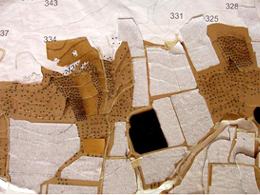STUDENTS PROJECTS
PROJECTS 2011
Student: Georgia Korentiou
Supervisors: Dimitra Fygka, Zissis Kotionis
University of Thessaly, Department of Architecture
Date of presentation: February 2011
This thesis concerns the design of a winery and a path through the landscape leading to it.
The aim is on the one hand to design a modern winery that could be visited while producing good quality wine, and on the other hand to give the opportunity to the visitor to wander and get in touch with the region of the production of wine, following the route.
The project is located in a low hill, in the south of the valley of Nemea (Hill of Flious), near the head of the river Asopus.
The building is mostly subterranean with some terraces-yards emerging in the join of the closed spaces. One of the primary goals of the thesis is the composition of a space that the visitor can experience through the senses of his human body. Some of its original design goals compared to the tactile understanding of space through the movement of the body are approached with the ¨sinking¨ of the building in the slope of the hill. What is more in this way the ideal conditions for the process of winemaking are also provided.
The path.
The approach and understanding of the landscape was achieved through walking in the region and identifying the characteristics that consist it: vegetation, ground, sunlight, air flow.
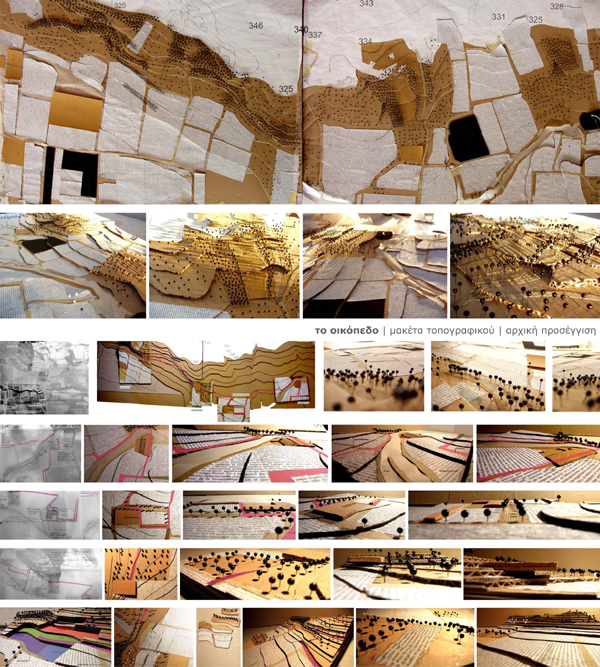
A walk is recommended in the existing topography. It starts from the eastern part of Rachiotissa Hill and it is developing among the landscape till the building of the winery and the archeological site Fliountos.
Secondary traffic lines and spaces, that are straightly connected with the path in the landscape, are proposed in the industrial area of the winery.
The visitor crosses the vineyards, passes under the olive trees, rests on the benches, encaves himself in the gradual sinkings of the ground level. The path suggests a view of the landscape through the senses, with the body of the visitor to be in constant dialectical relationship with the landscape and himself.

The components of the path is sitting, retaining wall, pergola, metal platform, fount, different textures of terrene and the existing vegetation. The materials used are reinforced concrete with soil contaminants, oxidized metal and stone.
The winery.
The tranquility of the site, the strict linearity of the vine, the gentle slope of the ground with olive trees and undergrowth urges a solution that will not be dictated by the size. It is proposed a subterranean building that merges into four floors depth and reveals only a small part of itself over the surface, from where the daylight enters. Moreover ¨burying¨ the building helps to approach the traditional winery architecture and to produce dark, quiet spaces formed by the shape and texture of the walls.
The functions are organized in different levels, with the receipt of the grapes in the highest level and the handling of boxes with the bottles at the lowest level, taking advantage of the gravity in some steps of the procedure of winemaking.
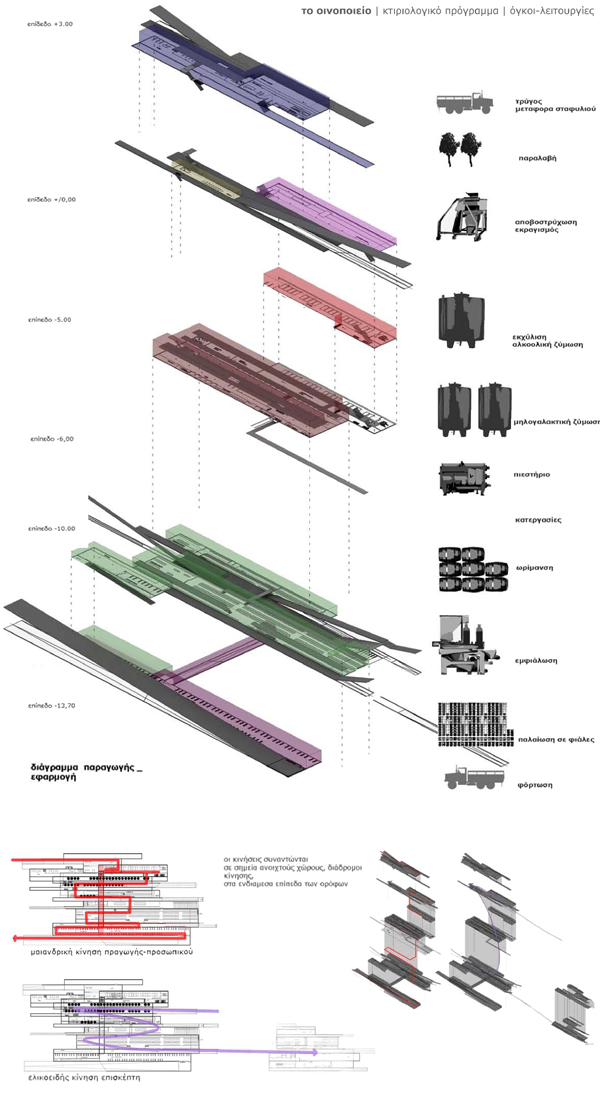
In the joints of the different levels, corresponding to different functions, intervene yards which contribute to the lighting and ventilation of the interior, like slots in the landscape of the hill.
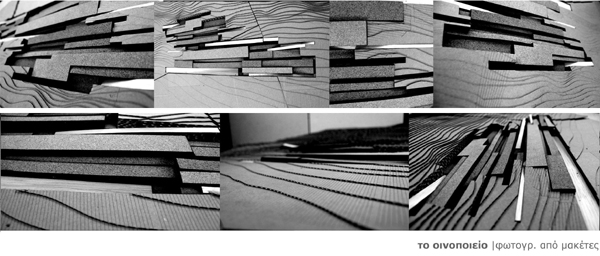
The material used is reinforced concrete with soil and contaminants having different colors and textures in places. The walls of the open spaces are made of stone.
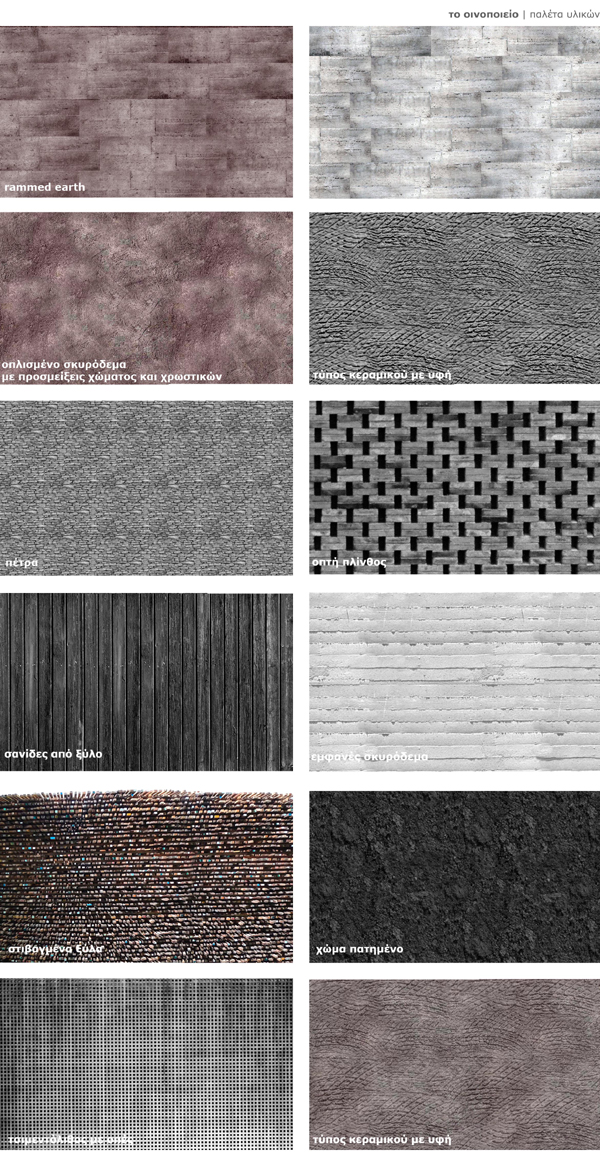
The visitor driven by the path crosses the vines and ends in a descending ramp leading down to the reception area of the winery. Then he may follow a serpentine way down to the interior of the building interrupted by the yards. The visitor uses the ¨in-between¨ floors of each area-level in order not to affect the process of the winemaking.
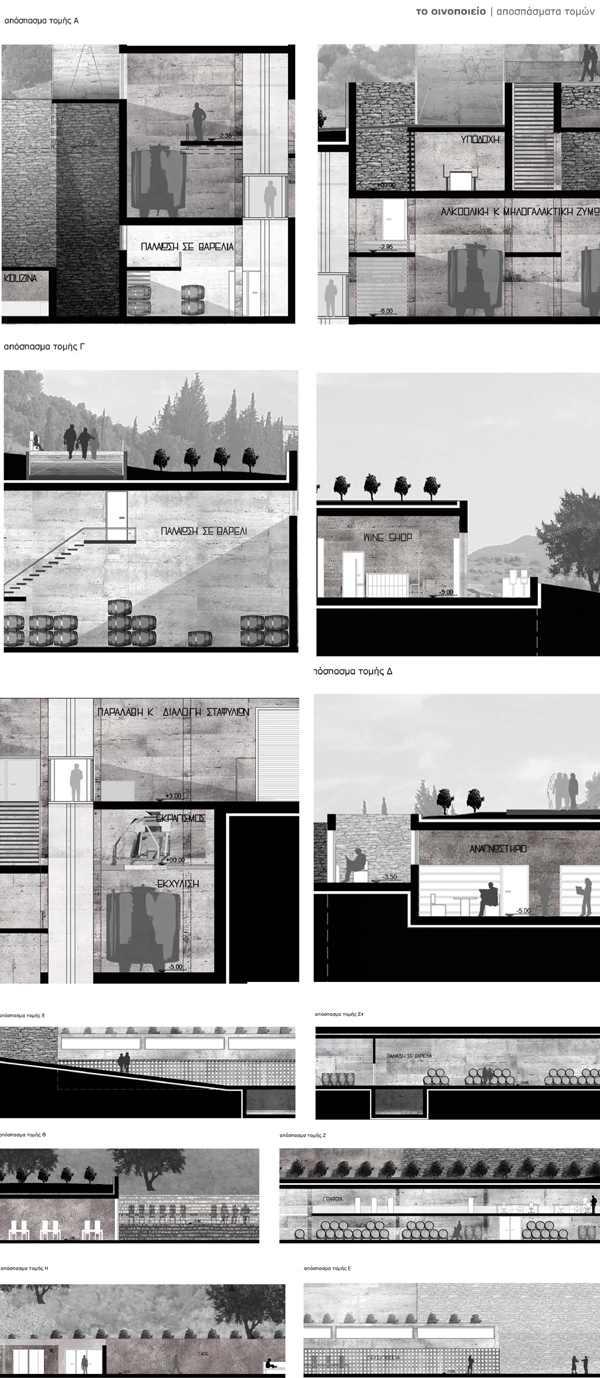
In contrast to the movement of the visitor is the production line. The two routes meet in the atria-yards. The visitor has the possibility to continue the walk in the landscape and not to enter the winery. In this case he will walk over the building, reaching the archeological site of Flious Hill.
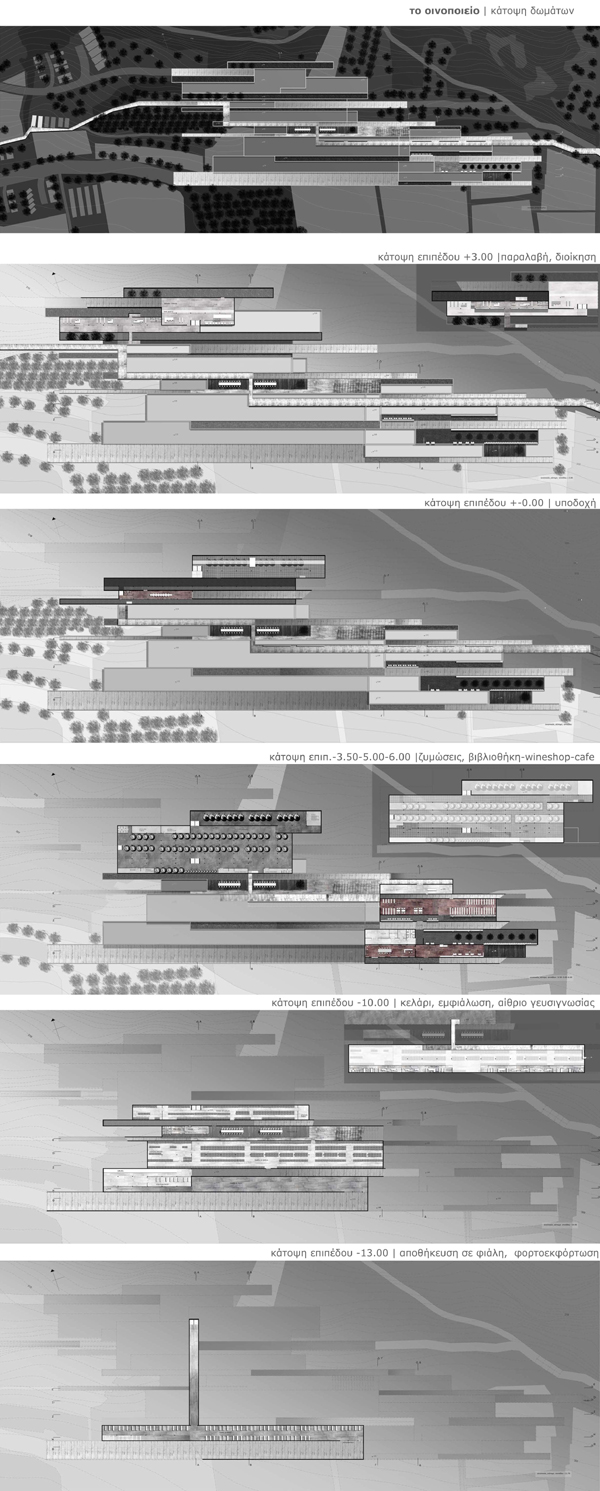
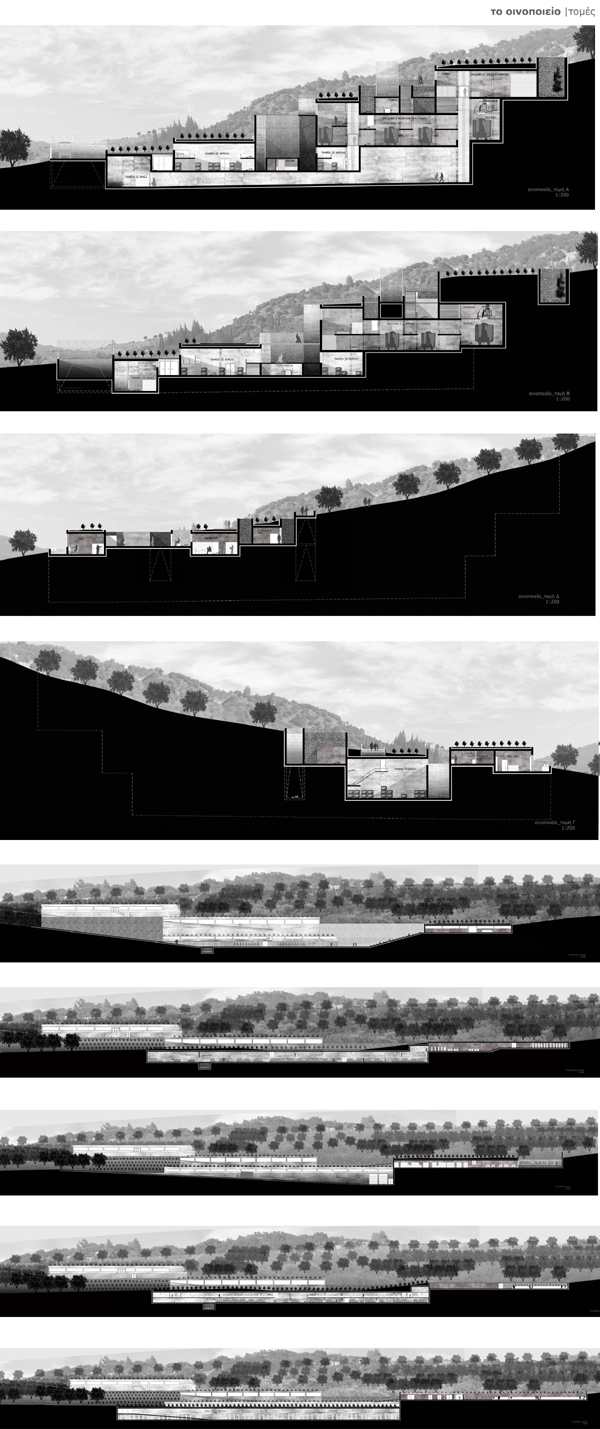
BRIEF DESCRIPTION
This thesis deals with the design of a winery and a path leading to it. The visitor crosses the vineyards, with his body in constant dialectical relationship with the landscape, and ends in the winery. The building is mostly subterranean with some atriums intervening. The thesis approaches the way that the total experience of architectural space is composed of the senses of human body.
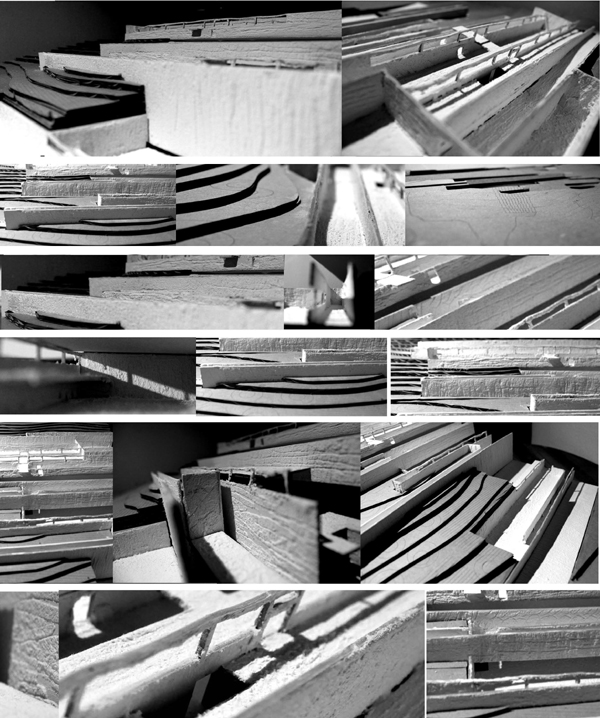
Related articles:
- Winery in Santorini ( 24 November, 2009 )
- Industrial Building on the fringes of Attiki Odos ( 15 November, 2009 )
- MEDICAL INSTRUMENTS FACTORY AT RAFINA, ATTICA ( 20 October, 2009 )
- Reutilisation of the building T.A.O.L. in Lefkada ( 23 June, 2010 )
- Routes in the paths of emery ( 01 February, 2011 )
- Urban integration and reuse of the former paper industry of Ladopoulos in Patras ( 20 February, 2011 )
- The old factory of Azel ( 04 April, 2011 )
- Restoration and reuse of the Tzivre silk mill in Soufli ( 14 June, 2011 )
- Project Suggestion for Reusing KOMDE’s industrial complex in Trikala ( 16 August, 2011 )
- Mining Museum in Serifos ( 15 February, 2012 )
- Multi-space of Meditteranean Diet in metropolitan park in Goudi ( 05 March, 2012 )
- Winery Casa da Torre ( 15 March, 2012 )
- Subverting the non use ( 26 March, 2012 )
- Cultural Park in inactive lignite mines of Ptolemaida ( 27 September, 2012 )
- Winery in Nemea ( 01 May, 2012 )
- Mission Hill Family Estate Winery ( 20 October, 2012 )
- LEFKADA. Landscape planning on the occasion of the old winery in Gira ( 11 May, 2013 )
- Industrial landscape in Aliveri ( 16 August, 2013 )
- Memory nd urban sityscape ( 24 May, 2013 )
- Decontamination and Production Mechanism ( 05 February, 2014 )
- Reformation and rehabilitation of an inactive quarry, with spatial location of uses for Tourism, Recreation and Environmental Education ( 10 February, 2014 )
- Redesigning the silo at the historic Allatini Mills ( 09 May, 2014 )
- meta industrial landscape ( 09 July, 2014 )
- Restructuring the Industrial Landscape ( 19 July, 2014 )
- inte[R]outes ( 11 December, 2014 )
- Lato and Kekrops Quarries: a walk in the residual landscape ( 28 January, 2015 )
- Print your utopia ( 07 February, 2015 )
- Nemea ( 22 July, 2015 )
- ADAPTIVE REUSE OF A FORMER PAPER FACTORY IN AIGIO AND CONVERSION TO REHABILITATION CENTRE FOR DISABLED PEOPLE ( 12 August, 2015 )
